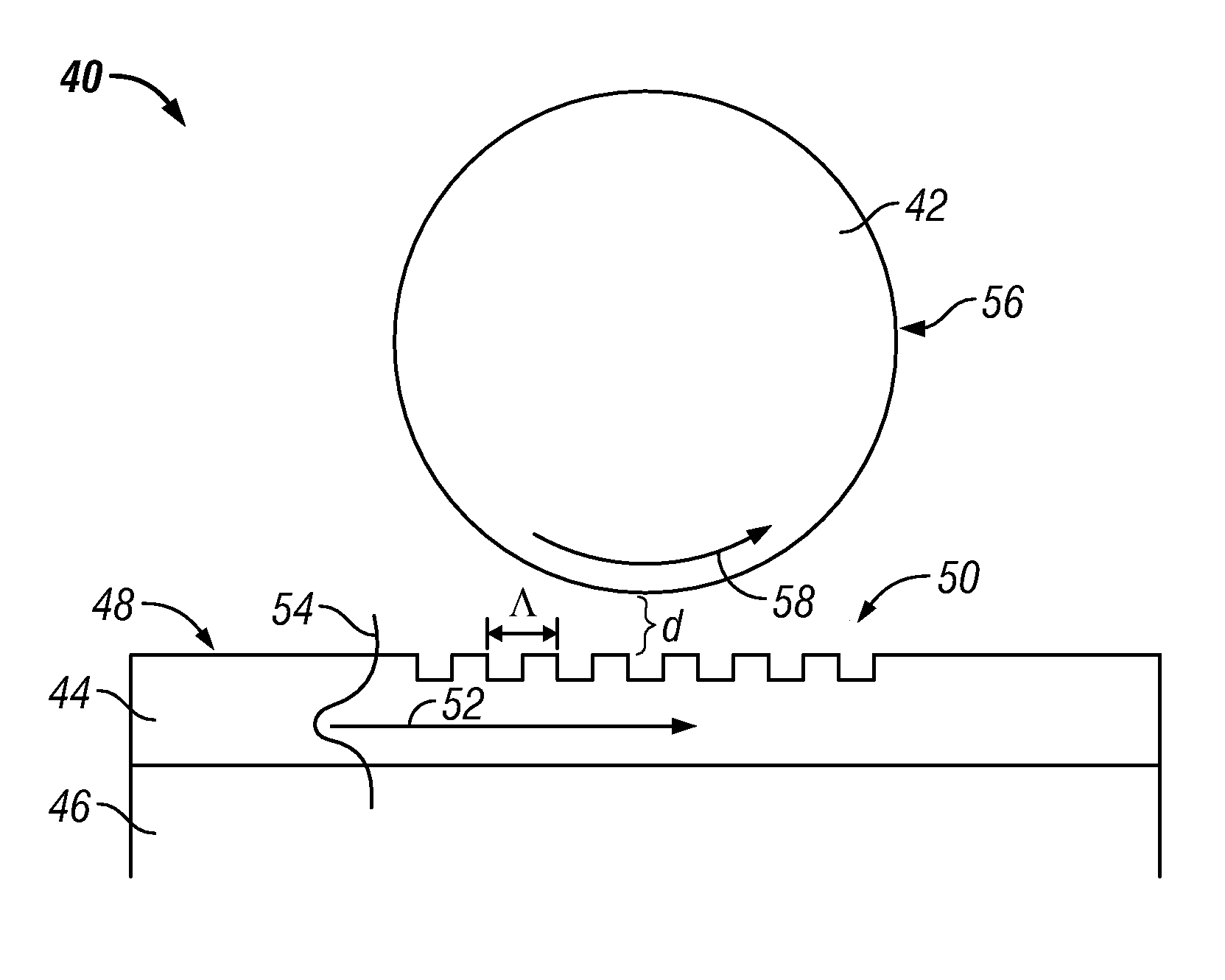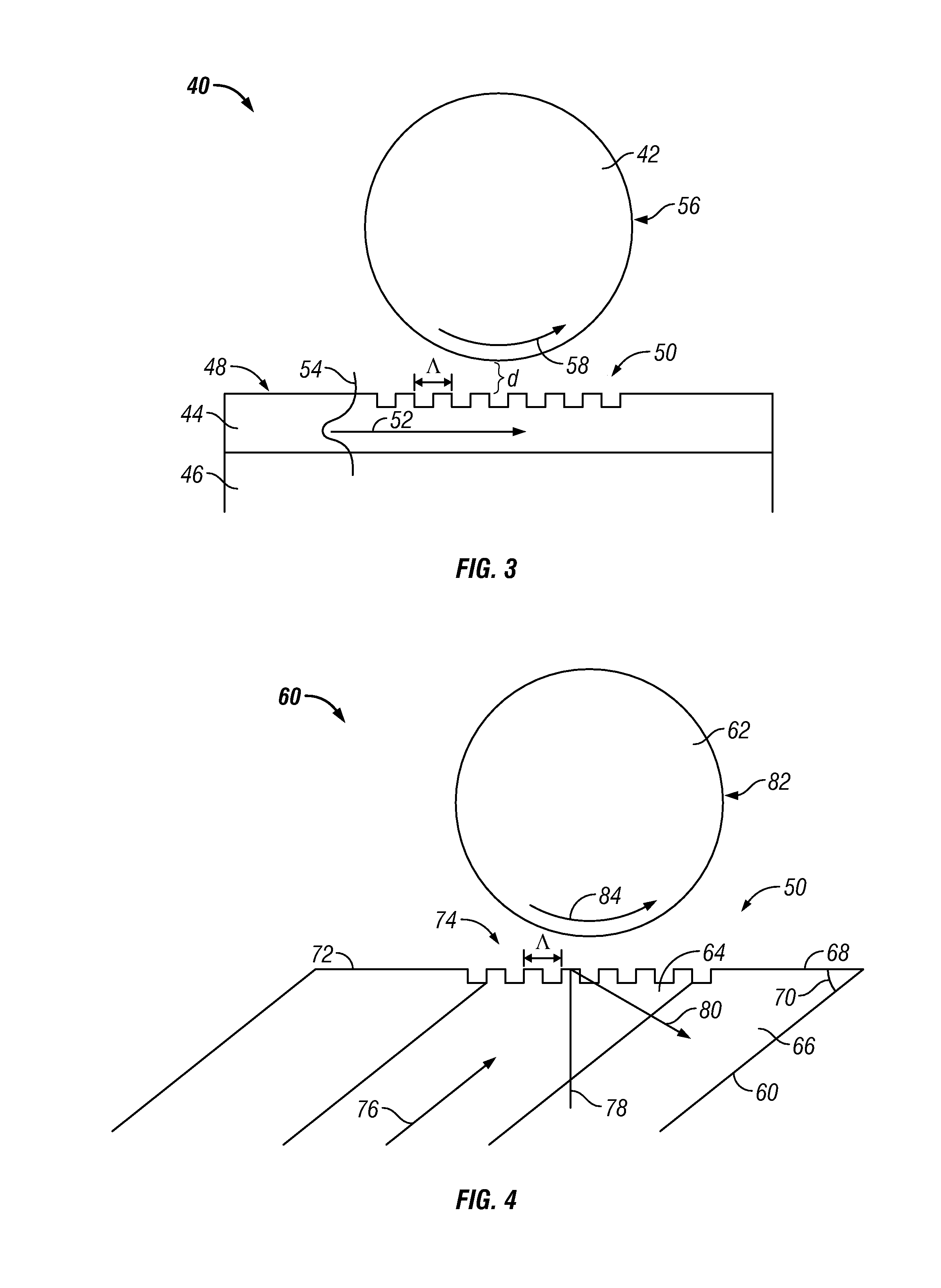Evanescently coupling light between waveguides and whispering-gallery mode optical resonators
a waveguide and optical resonator technology, applied in the field of optical systems, can solve the problems of less efficient energy transfer from the optical coupler to the optical resonator, the coupling of light between the optical resonator and the optical coupler becomes difficult, and the output peak of the wgm is broken
- Summary
- Abstract
- Description
- Claims
- Application Information
AI Technical Summary
Problems solved by technology
Method used
Image
Examples
Embodiment Construction
[0036]The present invention involves optical systems in which light is coupled into an optical resonator by means of an optical element having a periodic structure. The periodic structure facilitates the coupling of light from the optical element into the optical resonator. One embodiment of the present invention is a system that includes an optical resonator and a waveguide. The waveguide has a periodic structure adjacent to the optical resonator. Light propagates through the waveguide, interacts with the periodic structure, and couples from the waveguide into the optical resonator.
[0037]Another embodiment of the present invention is a system that includes an optical resonator and an optical coupler. The optical coupler has an optical coupler surface with a periodic structure located adjacent to the optical resonator. Light propagates through the optical coupler, interacts with the periodic structure, and couples from the optical coupler into the optical resonator.
[0038]Another emb...
PUM
 Login to View More
Login to View More Abstract
Description
Claims
Application Information
 Login to View More
Login to View More - R&D
- Intellectual Property
- Life Sciences
- Materials
- Tech Scout
- Unparalleled Data Quality
- Higher Quality Content
- 60% Fewer Hallucinations
Browse by: Latest US Patents, China's latest patents, Technical Efficacy Thesaurus, Application Domain, Technology Topic, Popular Technical Reports.
© 2025 PatSnap. All rights reserved.Legal|Privacy policy|Modern Slavery Act Transparency Statement|Sitemap|About US| Contact US: help@patsnap.com



